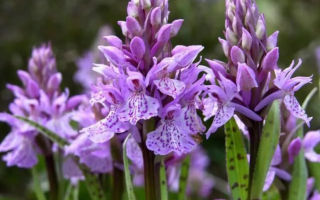Content
Orchis are bred in areas not only for decoration, but also for use in therapy and prevention of various pathologies. The plant has several variants of names. The medicinal properties and contraindications of orchis are confirmed by scientific research.
What does the orchis look like and where does it grow?
The name of the plant is due to its characteristics. From the ancient Greek language, orchis is translated as "testicle". Indeed, the shape of the rhizome resembles a food product. However, there are varieties whose roots are more elongated.
The plant is called:
- orchis;
- the tears of a cuckoo;
- forest orchid;
- core;
- dog tongues.
The plant is distributed mainly in the Northern Hemisphere. This is due to the fact that the orchis does not tolerate dry and hot weather, preferring a subtropical, cold and temperate climate and moist soil. The forest orchid grows almost throughout Russia.
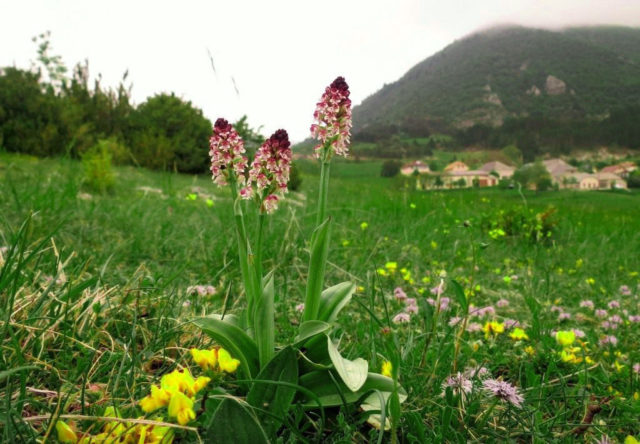
Orchis species
The medicinal plant is presented in several varieties. Their use depends on the indications for use in various diseases.
Male
The species grows in the territory of Ukraine, the Caucasus and the Urals (western Russia). It can adapt to various varieties of deciduous forest soil. The swampy and acidic environment is not suitable for the male orchis.
The flowers form a brush and are characterized by a crimson color. For medicinal purposes, plant rhizomes are used. Substances that are obtained from forest orchids can be used for the following pathologies:
- diseases of the gastrointestinal tract;
- cystitis;
- infertility.
The funds have analgesic and wound healing effects. They help boost immunity.
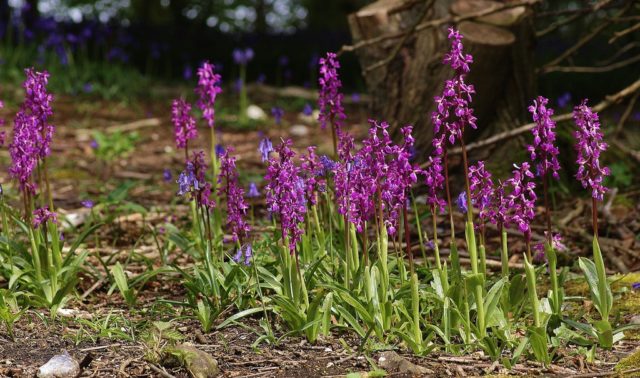
Spotted
The rhizomes are elongated. The species is also called finger-root. The plant can be found on the territory:
- Russia;
- Belarus;
- Ukraine.
A special feature is the root consisting of young and old tubers. The tall stem has 8 leaves, which are covered with purple spots. Flowers of a light pink hue differ in the shape of the helmet. Orchis is used to treat diseases of the digestive system.
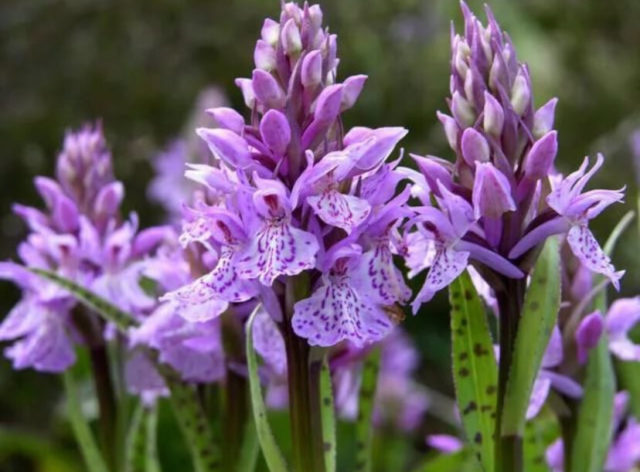
Helmet-bearing
The classic look has 1 stem. The leaves are located below. The flowers are light pink. The cephalic orchis has 2 developed tubers. The plant prefers calcium-rich and dry soil.

For the manufacture of medicines, tubers are used. They are used to:
- improving potency;
- therapy of diseases of the respiratory system;
- normalization of digestion.
Burnt
This is a rare species.The plant is called burnt neotinea. Such a core grows in deciduous forests and prefers mainly slightly alkaline soil in the following areas:
- Russia (European regions);
- Anatolia;
- Belarus;
- Ukraine;
- The Mediterranean;
- Scandinavia.
The long stem is distinguished by the presence of a helmet inflorescence. A well-developed oval-shaped rhizome has 2 tubers.
Burnt orchis can be used in the following cases:
- epilepsy;
- poisoning;
- inflammatory processes of the digestive system.
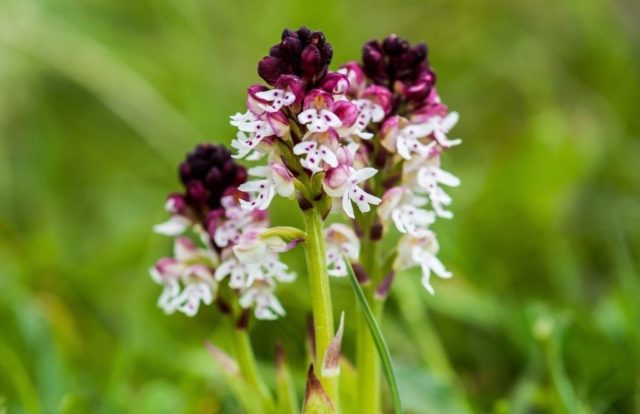
The chemical composition of the orchis
The beneficial properties of orchis are due to the substances present. The unique composition includes the following components:
- slime;
- starch;
- quercetin;
- coumarin;
- mineral salts;
- carotene;
- calcium;
- essential oils;
- sucrose;
- glycosides;
- polysaccharides.
Why is orchis useful?
In folk medicine, the forest orchid is valued for its beneficial effects on the body. The core has the following beneficial properties:
- hemostatic (hematopoietic and hematopoietic);
- enveloping;
- anti-inflammatory;
- strengthening.
Medicinal properties of orchis for men
The plant is effective for reproductive disorders. The healing properties of orchis for men are used to increase potency.
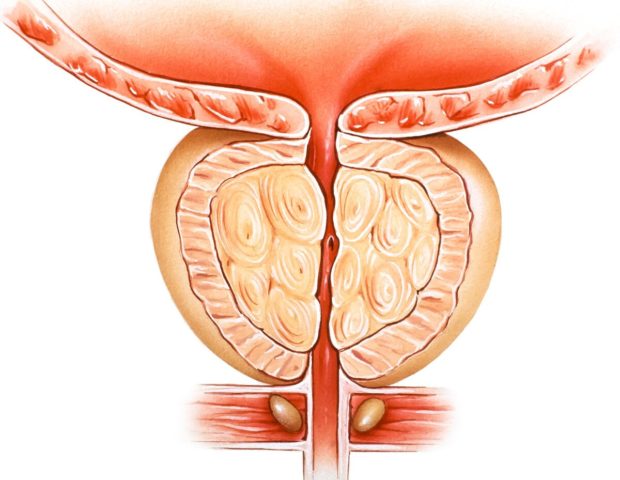
Medicinal properties of orchis for women
The root is used to make contraceptive infusions. Core products help restore the cycle.
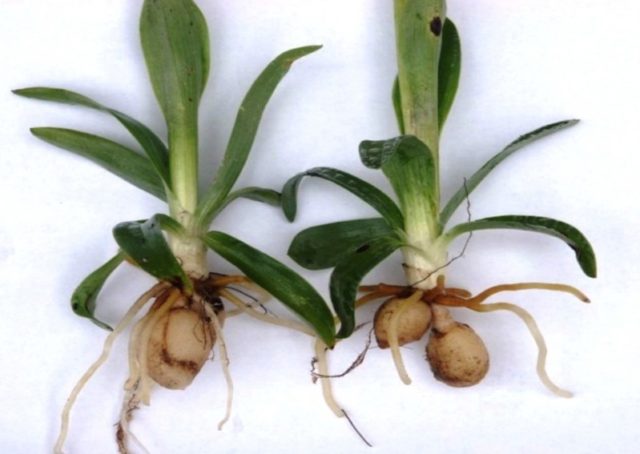
What heals and what helps orchis
Forest orchid products can be used to treat and prevent various diseases. Orchis can be brewed for the following pathologies:
- violation of sexual function (in women and men);
- tuberculosis;
- enteritis;
- poisoning;
- gastritis;
- ulcer;
- nervous disorders;
- diarrhea.
Infusion
The forest orchid can be used to treat diarrhea. To 500 ml of boiled hot water add 120 g of dried root (salep). The tool is insisted for half an hour.
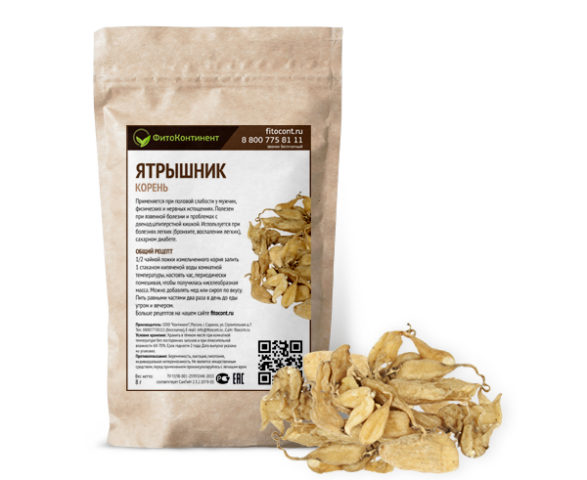
In case of poisoning, you need to pour 1 teaspoon of orchis powder with 200 ml of boiled hot water. The product is infused for 50 minutes, honey is added. The resulting drink is taken twice a day.
Tinctures
Fresh orchis root and rye bread should be crumbled. Cognac alcohol is poured into the mass and the product is placed in a dark place. After 2 months, the infusion is squeezed out. The cake is burned and added to the liquid. Insist for another 2 months. Before taking, the product is mixed with red wine.
It is known that orchis flowers are rarely used as medicines. For inflammation of the prostate gland, you can make and take tinctures from olive oil.
The flowers must be pre-dried and chopped. Raw materials (50 g) are poured with olive oil (500 ml). The composition is kept for 2 weeks in a dark and dry place. Filter the tincture before use. The tool is taken twice a day before meals, 2 tablespoons.
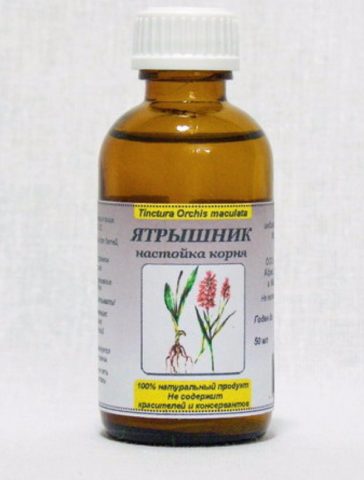
Decoctions
For hemorrhoids, 10 g of powder from the root is poured with milk (200 ml). The mixture is boiled for 10 minutes, cooled. You need to drink a decoction of orchis in equal portions.
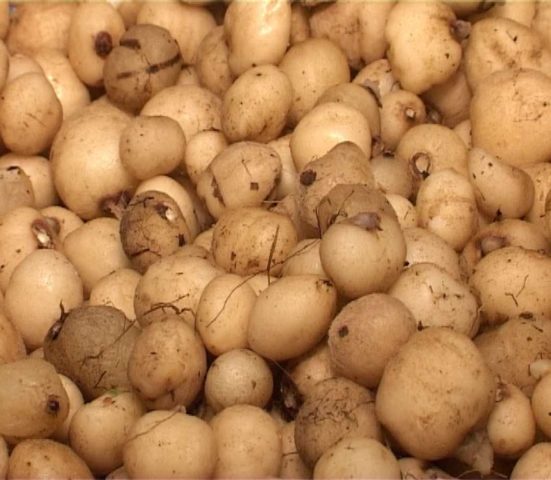
Broths are used for prostatitis. To 250 ml of water add 2 teaspoons of orchis root powder. The composition is simmered for 10 minutes. The product is cooled, filtered. The broth is drunk three times a day, 3 tablespoons.
Ointments
For abscesses, dog tongues can be used externally. Pork fat and root powder are mixed in a container in equal proportions. The mixture is applied to the affected area. After treatment with ointment, the place of the abscess is bandaged.
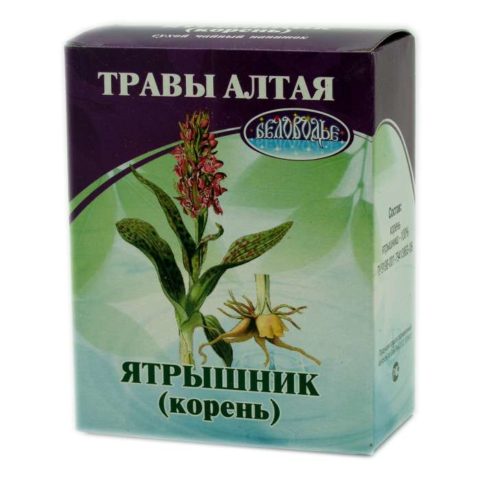
Kissel
Orchis helps restore the menstrual cycle. To prepare jelly, fresh root is crushed and poured into a glass of milk. The mixture is shaken until a thick consistency is obtained, filtered, red wine is added.
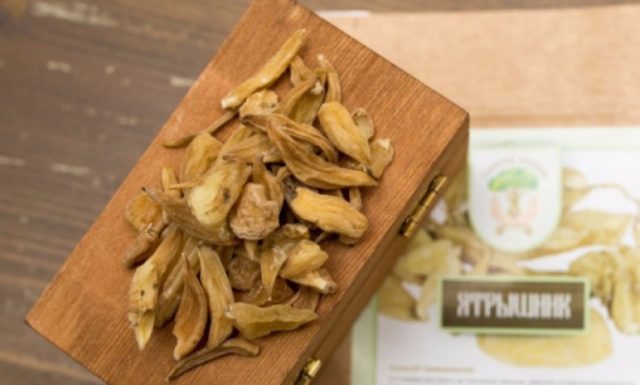
For the treatment and prevention of colds, rhizome powder, starch (25 g each) and sugar (100 g) are mixed. Then add water until the consistency of sour cream and 250 ml of milk is obtained. The mixture is boiled for 5 minutes, cooled, cinnamon added for taste. Kissel is drunk in small sips.
Contraindications
The orchis herb is called a special plant. This is due not only to the fact that the forest orchid is listed in the Red Book. Orchis can be both beneficial and harmful.
The core is well tolerated and rarely causes allergic reactions. Water and dairy products made on the basis of orchis can be drunk even by children and pregnant women. However, before using broths, infusions, it is advisable to consult a specialist.
You should not combine the intake of dog tongues and medications containing tannin. This can lead to dysfunction of the digestive system.
Collection and preparation of grass
The orchis, the photo of which is located above, is listed in the plant register of the Red Book. Harvesting is prohibited in the wild. Harvesting for medicinal purposes is carried out if the forest orchid is grown independently in a summer cottage.
Flowers are removed during April-June. During this period, abundant flowering is noted. The tubers are harvested later.
It is noteworthy that leaves and stems are not used for medicinal purposes. They have no beneficial properties and can cause indigestion.
It is important not only to take the orchis correctly. Compliance with the rules for its storage is essential. Raw materials are kept in a dry and ventilated place. In this case, the healing qualities are preserved for 6 years.
Conclusion
The medicinal properties and contraindications of orchis are known in folk medicine. The medicine should be used according to popular recipes. A healing plant for a short time relieves the symptoms of various pathologies in both men and women. The orchis has the advantage of many indications for use.
Reviews from those who have taken orchis
The plant is used to treat diseases of the digestive system, reproductive system, and skin. The properties of orchis roots are due to the unique composition. Reviews indicate the effectiveness of the tools used.

